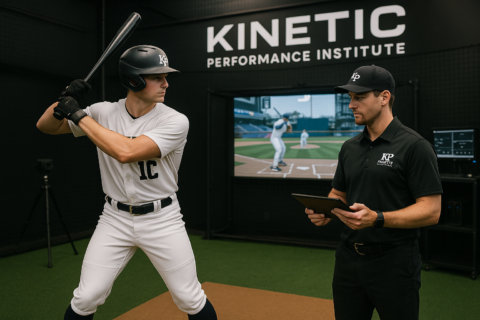The Development Track: A Race Between the 4 Selfs
As the mindset and rhetoric in baseball shifts (rightfully so) towards player development and away from showcases, specialty teams that don’t practice/develop their players, and the “old guard,” much attention has been placed on the training and skill development side of things. While all that is definitely important, we often gloss over or do not consider the mental, emotional, and social well being of the athletes. The accuracy and lens in which they perceive themselves can be just as important, if not more, to their development than everything that is involved on the physical side.
As athletes get further along in their development and playing careers, their mental game and self perception become much more important. With an accurate view of themselves, they can better judge their current state, what they need to do improve, and how to get to where they want to go. There are many factors in their self-efficacy and we need to make sure they have an accurate understanding of their current state, talent level, and the floor/ceiling they are operating in.
We often frame this conversation by letting the athletes know they are in a constant race to fulfill their talent and goals. This race is not what they think… between other athletes or teams to get to where they want to go, rather the race is inside themselves. Athletes are constantly battling different dynamics inside of themselves. This race is the most important of them all and must be conquered for the player to move forward. There are 4 “selfs” in this race, and which one wins could be the key to an athlete’s future.
Self #1 – The Past Self
Athletes often identify with who they used to be. This normally isn’t a good thing, especially when changes need to be made to accelerate or kickstart a new phase of development. Athletes that were accomplished at younger ages often hold on very tightly to who they were. They have a false sense of where they are currently at because they still think they are the player they used to be. This is a dangerous place to be, as athletes will not focus on the skills they need to acquire to be a great player in the future. They often don’t think they need to change because they used to be good. The only time it might be a good idea to refer back to the Past Self is if an athlete is struggling and referring back to past accomplishments might get them in the right frame of mind. Too many athletes get caught up staying in the Past Self and it can completely de-rail a baseball career and a player’s development.
Self #2 – The Perceived Self
This self can go hand-in-hand with the Past Self, or it can be it’s own entity. Very often athletes have a perception of who they are as players and their work ethic, and that Perceived Self is not consistent with reality. They feel they are better than they are and that they work harder than they actually do. This is usually fueled by low self-esteem… they do not want to acknowledge reality that they have a lot of work to do and would rather “fake” it then deal with the reality that they are not very good. When they do work, it’s usually so they can get acknowledgement from others or so they can post their workout on social medial to get “likes” or comments. This false perception of self is a very common reasons players fizzle out in high school or early college.
Self #3 – Current Self
Many mature, young athletes can have a realistic view of themselves. They understand their strengths and flaws and their spot on a team. These athletes usually are very refreshing to coach because they have a mature and realistic view of the situation. They are usually fairly hard workers because they understand who they are… whether that be below average, average, or good… they have a sense of self and want to improve it. The problem with this self is that athletes can sometimes have too much sense of who they really are and think that that perception is permanent. If they are below average or average they might not have a bright outlook for the future. They might discount the power of their work, how far they can advance, and their ability to develop further. The blessing of an accurate view of self can be the curse because they think that’s who they always will be.
Self #4 – Future Self
The Future Self is the vision an athlete has for themselves down the road. It’s a perspective on what they want to become. It’s extremely important for an athlete’s development to have this vision and to work hard to get to those long-term goals. If athletes want to get to where their vision is, they need to live into that vision everyday with their habits and work ethic. They need to have a solid mental representation on what it will take to develop and stay on a path with structure and consistency. The large problem with the Future Self is that almost all athletes have a favorable view of the future and they claim to want to be a great player in the future, but very few actually do what it takes to get to that vision. It’s easy to have the vision, it’s very difficult to sacrifice what it takes to achieve that vision.
As players get older and the physical playing field evens out amongst the athletes, the race between the “Selfs” becomes more and more important. In a perfect world, we want the right mix between all of them. We want players to have a strong sense of who they were, who they are now, and where they are going. We want them to have a strong value of self worth. As these “Selfs” race each other in their development, we want the future self to always be winning with the hopes they are constantly working to catch up to that self. We often see the players who fail at the older ages are the ones that let the past and perceived selves win. So while the past and perception are important, they can’t be the driving force or else there will never be progress. The Current Self must acknowledge the Future Self and dedicate themselves to winning the race.


